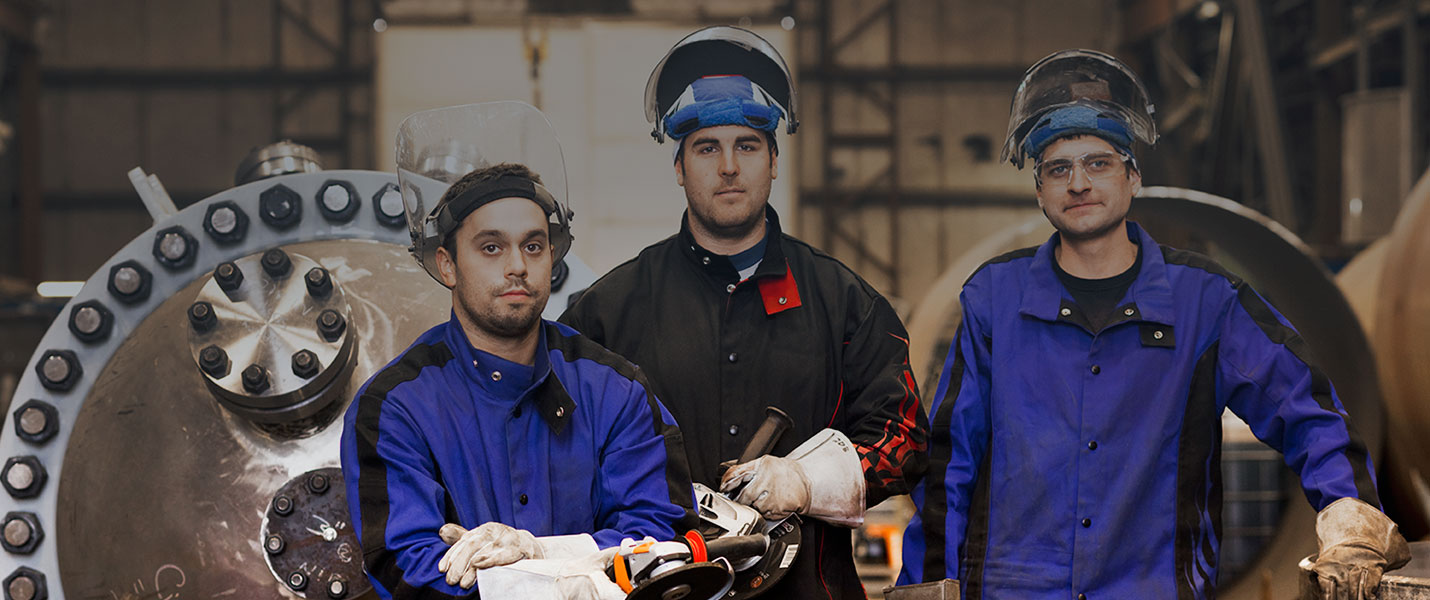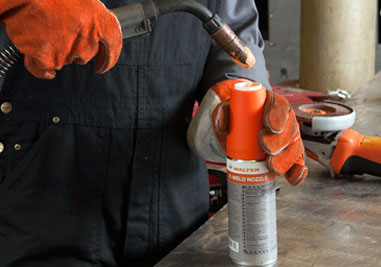
News- In Search of the Perfect Weld

What metalworker wouldn’t want a perfect weld? What volume manufacturer wouldn’t want less rejected welds? In such steely pursuits, perfection is often synonymous with spatter-free jobs. An impossible task? Not with today’s solutions.
Weld spatter, or slag, are droplets of molten metal or non-metallic materials that scatter and splash during the welding process. These tiny bits of hot material can stick to the base material or any surrounding metallic material.
The main causes of these imperfections are typically surface preparation and equipment issues. For metalworkers, spatter – which is generally caused by a disturbance in the weld pool – is an unnecessary and costly nuisance.
Of course, there are abrasive solutions to remove spatter and smooth surfaces for painting, finishing and other operations, but let’s look at the causes first.
There are several specific causes, such as incorrect equipment amperages, voltages or electrical stick-out settings. Welding at the wrong angle is also problematic. And the jury is still out on whether pushing or dragging in MIG welding is best. Regardless, best practice is to not exceed 15 degrees as steeper angles will generate excessive spatter.
As will erratic wire feeding, which causes amperage fluctuations that lead to bead splashes. Even modes of metal transfer create challenges – short arc and globular transfers cause spatter, so it’s best to optimize spray transfer, which can be done with at least 83% argon in shielding gas mixes (a typical ratio is 90% argon:10% CO2).
And don’t scrimp on shielding gas. Poor-quality gases can leave welded surfaces looking worse for wear. Which brings us to surface contaminants. Impurities of this nature – oil, rust and paints – are common causes of spatter, which is why it’s vital to clean surfaces as best as possible prior to welding.
Not only do weld pool surface contaminants increase the risk of spatter, their presence can cause porous welds, cracks and instigate corrosion.
There are post-weld abrasive solutions – grinding, sanding and polishing – that can reduce surface imperfections brought on by problematic welds, but this adds time and costs to jobs.
This is where anti-spatter solutions, which prevent molten metal beads from adhering to workpieces and protect welding equipment, can be of enormous help.
It’s vital to opt for superior anti-spatter emulsions that retract in the presence of heat and leave weld pools free of liquids because, even in over-application to work surfaces, a premium product won’t cause weld porosity.
For example, Walter Surface Technology’s E-Weld 4, which is VOC-free and biodegradable, is the only anti-spatter solution guaranteed not to cause weld porosity while eliminating cracking and reducing the number of rejected welds.
Lower-quality anti-spatter solutions cannot make the same promise. Not only will a top anti-spatter solution perform well in high heat conditions, superior products are multi-functional and can be used as cleaners and degreasers to prepare surfaces before welding. Other attractive characteristics are corrosion prevention properties and good post-weld paint adhesion.
It’s also vital to correctly maintain welding nozzles. During the welding process, nozzles and tips get clogged by hot spatter fusing to the nozzle. This prevents shielding gas from flowing freely and heating the wire evenly, which can adversely affect the weld bead, including increased porosity. Often, the end result is a poor-quality weld with a higher rejection rate.
This is where ultra-high-tech ceramic nozzle coatings can make a world of difference. Look for highly-concentrated formulas with special applicators that coat the exterior and interior of welding nozzles and contact tips to prevent spatter from adhering to equipment.
Products such as Walter’s E-Weld Nozzle and applicator offer an economical solution that lasts for up to eight hours. Not only is it ideal for MIG welding and can withstand temperatures of up to 1,832F, it can be used for plasma and laser cutting applications.
Today’s technologies offer all manner of solutions for both removal and economical prevention of weld spatter. But perfection lies in making the best choice.
Jonathan Douville, Senior Product Manager, Walter Surface Technologies - June 2017


